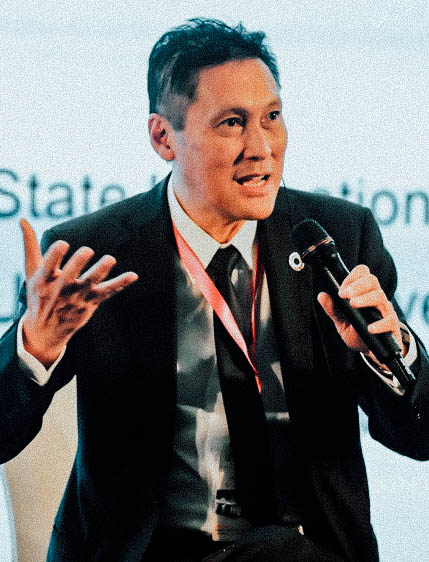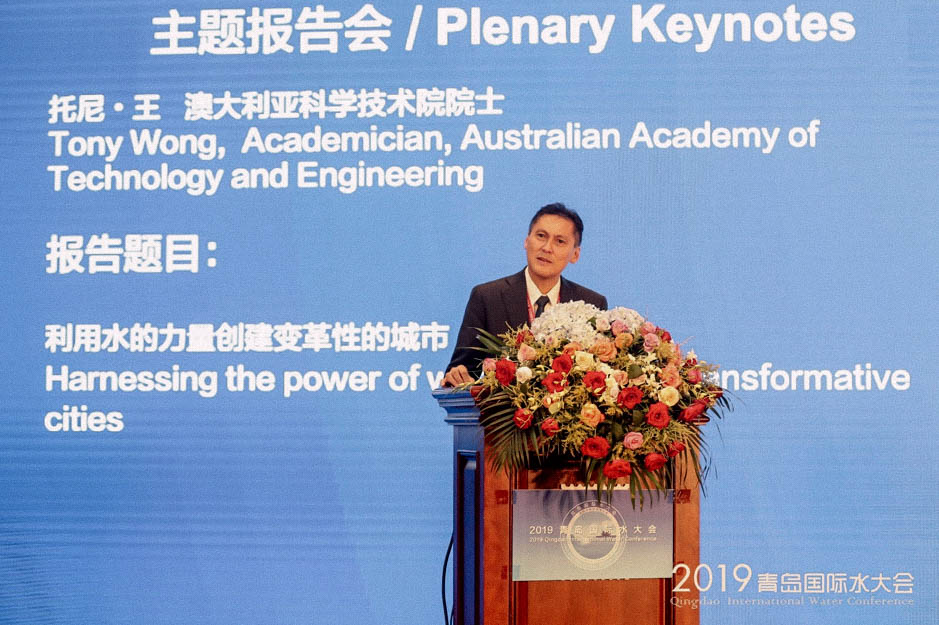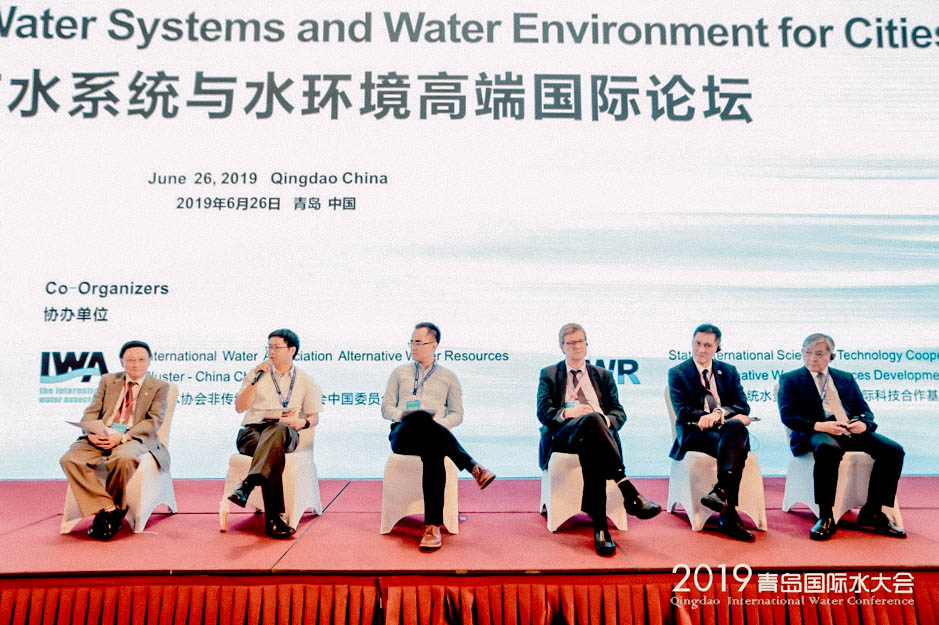Tony Wong talks circular economies in Qingdao (China)

On 26 June, I had the pleasure of presenting a keynote address at the Qingdao International Water Conference, a gathering of over 600 water industry practitioners from China and internationally. Now into its 14th year, this annual conference and exhibition showcases domestic and industrial water treatment technologies, including water desalination and industrial wastewater treatment.
Having licence to be provocative, I discussed integrated urban water management, the role of the hybrid infrastructure of centralised/decentralised solutions, fit-for-purpose water treatment, nature-based solutions, social-technical approaches, and water sensitive cities – all framed in the context of creating localised circular economies around water, energy and waste. It’s our vision for creating Transformative Cities using urban water management as the catalyst. It was refreshing to be presenting to a somewhat techno-centric sceptical audience, albeit an audience open to understanding what may be emerging in global practices as far as sustainable and resilient cities are concerned.

In a subsequent high-level forum of industry and city leaders, Professor David Butler (University of Exeter, UK), Professor Hiroaki Furumai (University of Tokyo) and I were part of a panel discussion with an extended Q&A about China’s Sponge Cities initiative. This was my opportunity to draw out the parallels with the Water Sensitive Cities concept, and I urged the audience to take a broader metaphoric interpretation of “Sponge” in thinking about integrated urban water management solutions. That is, the city as a “sponge” is not simply about infiltration. It can be seen as a “buffer” for the built and natural environment by (i) retention and detention of stormwater discharges and associated pollution; (ii) abatement of industrial pollution through recycling. And the solution could be any combination of hybrid infrastructure that suits the local context. This is the water sensitive cities approach.

Via the discussions that followed, I realised the biggest challenge practitioners face is one of standardisation – preferably by prescribing a technological fix. Many in the audience simply wanted to be told what to do or wanted standard designs that can be rapidly replicated. This need is not uncommon; globally, we see the tension between policies requiring standardised/prescribed water management practices and policies that are outcome-focused requiring place-based (bespoke) solutions. The scale and pace of development in China acutely heightens this tension, and the concept of place-based context-specific water sensitive solutions is difficult for the audience at large to embrace. So we find that water sensitive cities practice remains the domain of the exclusive and I am left pondering what mainstreaming water sensitive cities practices in China may entail.
On my final day in China, I was privileged to present a lecture to final year engineering students at the Qingdao University of Technology … a much more impressionable audience!